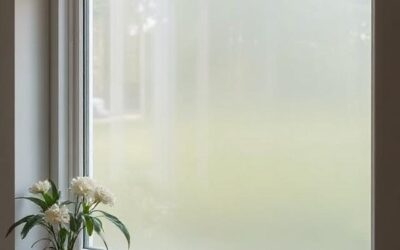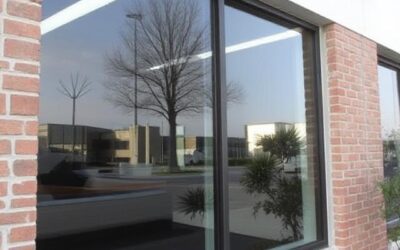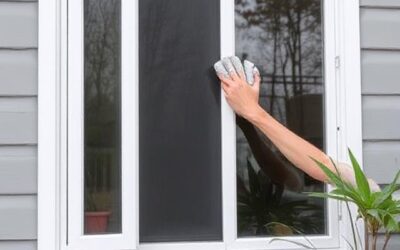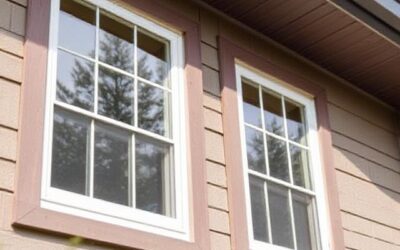Modern workplaces rely on natural light to create a pleasant atmosphere, but excessive sunlight can lead to distractions, discomfort, and reduced efficiency. Window films provide a practical solution to address glare, temperature fluctuations, and privacy concerns in commercial settings. By applying specialized tinting solutions, offices can improve employee productivity while reducing energy costs
Window Films in Workplace Design
Large windows and open office layouts have become common in modern office spaces, providing access to natural light and outdoor views. However, excessive sunlight exposure can lead to challenges such as glare on computer screens, temperature inconsistencies, and compromised privacy.
The Role of Natural Light in Office Productivity
Exposure to natural light has been linked to improved mood, reduced fatigue, and better focus. Employees working in well-lit environments tend to be more alert and experience less strain throughout the day. However, too much direct sunlight can cause discomfort, making it difficult to maintain productivity.
Common Challenges with Large Windows in Office Spaces
While large windows create an open and inviting environment, they often bring unintended drawbacks. Sun glare can make it difficult to work on screens, while temperature fluctuations lead to discomfort. Additionally, transparent windows reduce privacy, making it harder for employees to focus.
How Window Tinting Solutions Enhance Work Environments
Window films offer a cost-effective way to control lighting, temperature, and privacy without sacrificing natural light. By selecting the right tinting solution, businesses can create an optimal work environment that supports employee well-being and efficiency.
The Impact of Glare Reduction on Productivity
How Excessive Glare Affects Employee Performance
Sunlight reflecting off screens and surfaces creates a harsh glare that makes it difficult to read or focus. Employees may experience eye strain, headaches, and reduced concentration, leading to lower productivity levels.
Anti-Glare Window Films: Benefits and Application
Anti-glare window films reduce the intensity of direct sunlight while maintaining natural brightness in the office. These films minimize reflections on computer screens and improve visibility, allowing employees to work comfortably without distractions.
Balancing Natural Light Without Discomfort
Instead of relying on blinds or curtains that block out sunlight completely, window films allow businesses to maintain bright workspaces while reducing harsh glare. This balance ensures employees benefit from natural light without experiencing discomfort.
Temperature Control and Energy Efficiency
The Effects of Inconsistent Temperatures in Offices
Temperature fluctuations can be a major source of discomfort in office spaces. In buildings with large glass windows, certain areas may become significantly warmer than others, making it difficult to maintain a consistent indoor climate.
Heat-Reducing Films for Warm Climates
In warmer regions, excessive heat gain through windows can lead to increased reliance on air conditioning. Heat-reducing films reflect infrared light, helping to keep indoor temperatures stable. This reduces cooling costs and creates a more comfortable work environment.
Insulating Films for Colder Environments
During winter, untreated windows allow heat to escape, forcing heating systems to work harder. Insulating films help retain indoor warmth by adding a thermal barrier to windows, improving energy efficiency while maintaining a cozy atmosphere.
Reducing Energy Costs with Window Tinting Solutions
By improving temperature regulation, businesses can lower their energy bills. Window films allow offices to reduce heating and cooling costs while maintaining a comfortable and productive work environment.
Enhancing Workplace Privacy with Window Tinting
The Need for Privacy in Modern Office Layouts
Open-concept offices encourage collaboration but often lack privacy. Meeting rooms and executive offices require discretion, while reception areas should maintain a professional appearance without being fully exposed to passersby.
Frosted and One-Way Mirror Films for Meeting Rooms
Frosted films obscure visibility while still allowing natural light to pass through, making them ideal for conference rooms and private offices. One-way mirror films offer an additional layer of privacy by preventing outside visibility while maintaining clear views from inside.
Maintaining an Open-Concept Design While Ensuring Confidentiality
Unlike traditional blinds or curtains that block views completely, window films allow businesses to maintain an open atmosphere while ensuring sensitive discussions remain confidential. This balance enhances both aesthetics and functionality in office spaces.
Reducing Eye Strain and Enhancing Employee Comfort
The Connection Between Lighting and Eye Fatigue
Staring at screens under bright or fluctuating lighting conditions contributes to eye strain. Employees working in offices with poor lighting control are more likely to experience fatigue, which can negatively impact their performance.
How Window Films Create a Comfortable Viewing Experience
By filtering excessive light and reducing glare, window films create a more visually comfortable workspace. Employees can work without constant adjustments to screen brightness, leading to better focus and reduced eye discomfort.
Increasing Productivity with Optimized Lighting Conditions
Proper lighting control helps maintain an optimal work environment where employees can perform tasks efficiently. Window films contribute to workplace wellness by ensuring a balance between natural light and controlled brightness.
Weather-Responsive Window Tinting for Offices
Managing Heat Gain and Glare During Summer
In warmer months, excessive sunlight can overheat office spaces, making air conditioning systems work harder. Solar control window films reduce heat absorption, keeping interiors cool and reducing the burden on HVAC systems.
Preventing Cold Drafts and Heat Loss in Winter
Winter months bring challenges such as cold drafts and increased energy usage for heating. Insulating window films help retain indoor warmth, reducing the need for excessive heating and lowering overall energy consumption.
UV-Blocking Films for Furniture and Screen Protection
UV rays not only affect employees but also damage office furniture, flooring, and electronic screens. Window films with UV protection prevent fading and deterioration, extending the lifespan of office interiors.
Choosing the Right Window Tinting Solutions for Your Office
Key Factors to Consider: Location, Office Layout, and Employee Needs
The right window film depends on various factors, including office location, the amount of direct sunlight exposure, and employee comfort needs. Businesses should assess these elements before selecting a tinting solution.
Professional Installation vs. DIY Application
While some window films can be applied as a DIY project, professional installation ensures precise application without bubbles or imperfections. Professionals also provide recommendations for the best film based on office conditions.
Maintenance and Longevity of Window Films
Window films require minimal maintenance and can last for years with proper care. Regular cleaning with non-abrasive solutions helps maintain clarity and effectiveness. Investing in high-quality films ensures long-term benefits for office spaces.
Conclusion: Enhancing Productivity with Smart Window Tinting
Window films contribute to a more efficient and comfortable work environment by addressing common challenges such as glare, temperature fluctuations, and privacy concerns. Businesses that invest in quality window tinting solutions benefit from improved employee productivity, reduced energy costs, and a more professional workspace. With the right films, offices can maintain an optimal balance of natural light, privacy, and climate control, creating an ideal setting for productivity and well-being.











